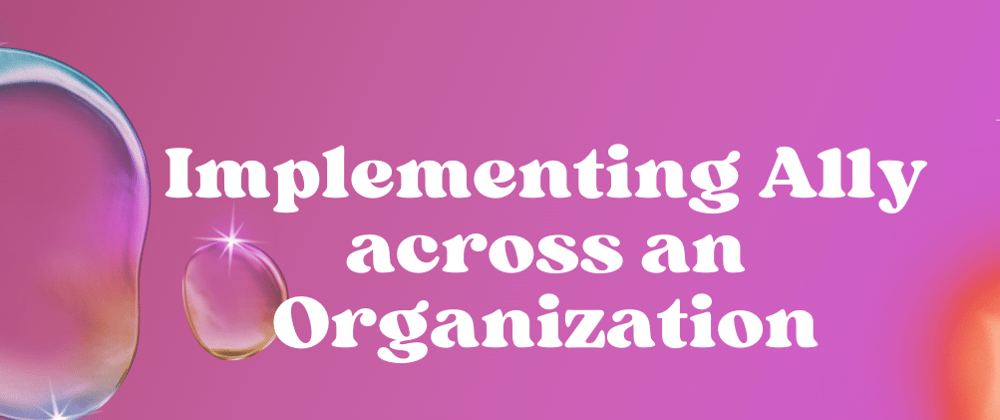Studying for the CPACC, I came across the W3C's recommendations for integrating web accessibility into an organization, which I found really interesting.
TL;DR: While some of these pointers use (at least to me) a little abstract and sometimes ‘buzzwordy’ language the point is clear: It’s a marathon, not a sprint. It takes, figuratively speaking, a village, not a single individual. Everyone needs to get on board, responsibilities need to be clear and regularly communicated. A good plan is already half the work done. And focussing on high-reward, low-effort tasks first, will take you a good step ahead in the game.
But let's have a closer look at their recommendations.
The W3C divides the process into 4 main phases:
- Initiate
- Plan
- Implement
- Sustain
Each has its own tasks and challenges, and I would strongly assume that these should not be taken as the one and only truth when applying the process to one's organization. After all, there is no cookie-cutter solution to web accessibility and each org is a little different.
The 4 Phases of Implementing ICT Accessibility across an Organization
Initiate
In the initial phase of implementing Web Accessibility into your organization, it’s a good idea to start with an exploration of the current environment to assess what you are dealing with. This is also the time to slowly set objectives: What are you trying to achieve, and why? It’s the time to raise awareness and educate yourself and your time on the basics of web accessibility and gather support for undertaking. You probably also need to develop your (business) case: How are you going to convince everyone to get on board and potentially spend time and money on the accessibility goal? There are many good reasons to invest in web accessibility as an organization, but people usually take a little convincing.
Plan
Next, you can start to plan your first steps: you can start by creating an accessibility policy to document the scope and your goals. This will also help you determine what roles and expertise might be needed to achieve these tasks. Make sure your budget covers all the resources you require, including training, audits, and potentially user testing. Review your website and the environment you are working in to ensure you are aware of all that needs fixing, potential tools and services you have to consider, etc.
This is also a good time to start thinking about how to monitor your progress, document your findings and establish a framework for the entire process. Communicating with everyone involved will ensure long-term support for integrating web accessibility in your organization (trust me, you will need it).
Implement
In the implementation phase, it’s time to build your expertise and skills and put them into practice. Ideally, web accessibility is intertwined with other activities to minimize overhead and create effective workflows. Regular evaluation will help keep track of the progress and reduce risks (and costs!). A tip from W3C that I found so valuable in ‘real life’ was to prioritize according to quick wins with high impact: This helps keep everyone motivated and has a massive impact on your users as well. Sharing your progress and keeping lines of communication open maintains awareness and ensures support over a longer time.
Sustain
Even when the main tasks are tackled, it’s important to continuously monitor accessibility and not discard the activities completely. Changing content can introduce new accessibility issues. It’s also important to keep the exchange with stakeholders up, track (possibly changing) legislations, and respond to the latest requirements. Technologies might change, so it’s good to stay on top of the latest developments. Last but not least, user feedback is a super valuable source of information that can help you improve your web accessibility.
What do you think of the W3C's recommended steps for implementing Web Accessibility across an organization? In your experience, is it practical? Let me know below, I'm curious to hear your opinions.






Top comments (0)